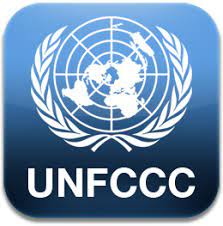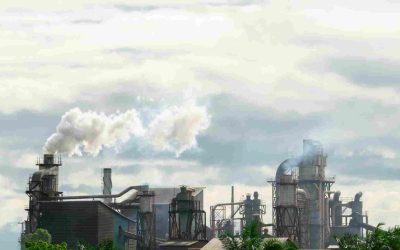At GreenTeamPower, our mission revolves around spurring the transition to renewable energy usage. One of the driving factors behind this mission is the detrimental effects of secondhand smoke from fossil fuels. When coal, oil, and natural gas are burned, they release a cocktail of pollutants into the air. Carbon dioxide (CO2), sulfur dioxide (SO2), nitrogen oxides (NOx), particulate matter (PM), and volatile organic compounds (VOCs) are among the harmful emissions associated with fossil fuel pollution.
The impacts of fossil fuel pollution are well-documented, including not only climate change, but health hazards such as respiratory diseases and cardiovascular disorders. Secondhand smoke exposure from cigarettes, a known carcinogen, presents similarly horrible health hazards, and even introduces its own environmental problems through littering.
While secondhand smoke exposure and fossil fuel pollution are distinct types of air pollution with varying compositions and health effects, they share common ground when it comes to their impact on human health. Secondhand smoke tends to be more concentrated in enclosed spaces, making nonsmokers particularly vulnerable to acute health effects such as irritation of the eyes, nose, and throat, increased asthma symptoms, and a higher risk of respiratory infections. On the other hand, fossil fuel pollution spreads over larger outdoor areas, affecting communities with chronic respiratory and cardiovascular diseases.

It’s not just litter.
It’s toxic waste.
Did you know that cigarette butts hold the notorious distinction of being the most littered item on our planet? Cigarette butts are ubiquitous in our environment, consistently accounting for 30 – 40% of litter collected during coastal and urban cleanups. With an astonishing 9.7 trillion cigarettes in the world, if you were to place them all end-to-end, they would wrap around the Earth five times.
What many people don’t realize is that cigarette filters are made of plastic fibers, specifically cellulose acetate. Contrary to popular belief, these filters do not biodegrade under normal circumstances. Instead, they persist in the environment, leaching toxic chemicals such as arsenic and lead into the soil, water, and air. This persistent litter poses a severe threat to our ecosystems and contributes to land, water, and air pollution.
Marine life is particularly vulnerable to the harmful effects of cigarette butt litter. As these small plastic fragments and microplastics are carried by currents, they become easily mistaken for food by marine animals. The consequences are dire, with ingestion leading to long-term damage and even death. Chemicals leached from cigarette butts, including nicotine, arsenic, and heavy metals, have been found to be acutely toxic to aquatic organisms.
Consider the devastating impact on our oceans: An estimated 4.5 trillion tobacco filters are littered each year in the United States alone, with many of them finding their way into the sea. Marine creatures suffer, as evidenced by heartbreaking images of birds mistakenly feeding their chicks cigarette butts, mistaking them for food. A toxic threat to the delicate balance of marine ecosystems, tobacco smoke contains more than 7,000 identified chemicals, with at least 70 known to be carcinogenic. The toxic waste from discarded cigarette butts permeates our streets, drains, and water bodies, negatively impacting both human health and the environment. And unfortunately, the burden of cigarette litter disproportionately affects marginalized communities, exacerbating existing environmental injustices.
Recognizing the adverse health effects associated with both secondhand smoke exposure and fossil fuel pollution, it becomes imperative to address and reduce exposure to these sources of pollution. Cigarette smoke contains a complex mixture of thousands of chemicals, many of which are toxic and carcinogenic. Nonsmokers who are exposed to secondhand smoke in indoor environments like homes, cars, and bars face significant health risks.
To protect public health and improve air quality, it is vital that we take action both individually and collectively. Encouraging responsible cigarette butt disposal, promoting awareness about the environmental impact of cigarette butt litter, and advocating for cleaner energy sources all contribute to the overall goal of a healthier and greener future.
Organizations such as lungsrus.org advocate for smoke-free screening programs to discourage the promotion of cigarettes in popular media. The Sierra Club’s tobacco product waste movement aims to raise awareness and engage young adults in the fight against the destructive legacy of tobacco, targeting communities affected by environmental injustices.
And change starts with individual responsibility and action. As individuals, we have the power to make a difference by actively participating in the cleanup and proper disposal of cigarette butts. A few days ago, I visited the Oak Park Community Center in Sacremento, a historic hub for minority populations in the US such as the older generation and people of color, where I witnessed and collected over 50 discarded cigarette butts in less than 20 minutes!
As GreenTeamPower’s mission is to strive for a greener and more sustainable future, we must recognize the environmental impact of similar issues such as cigarette litter. By raising awareness, supporting initiatives that promote smoke-free environments, and advocating for responsible disposal practices, we can make a significant contribution to cleaner communities and a healthier planet. Join the movement towards a tobacco-free and litter-free world by taking action today.
Sources and Further Reading:
- “Distressing Photo of a Bird Feeding Its Baby Trash Is the Wake-Up Call We All Need.” ScienceAlert, 8 May 2019, https://www.sciencealert.com/distressing-photo-of-a-bird-feeding-its-baby-trash-is-the-wake-up-call-we-all-need.
- “Why Are Cigarette Butts the Most Littered Item on Earth?” Truth Initiative, https://truthinitiative.org/research-resources/harmful-effects-tobacco/why-are-cigarette-butts-most-littered-item-earth.
- “Cigarette Butts: How the No.1 Most Littered Objects Are Choking Our Coasts.” The Guardian, 18 Aug. 2022, https://www.theguardian.com/environment/2022/aug/18/cigarette-butts-how-the-no-1-most-littered-objects-are-choking-our-coasts.
- “Top 10 Plastic Litter Items: The Great Pacific Garbage Patch.” Visual Capitalist, https://www.visualcapitalist.com/sp/top-10-plastic-litter/.
- “Stop Toxic Tobacco Waste.” Stop Toxic Tobacco Waste, https://www.stoptoxictobaccowaste.org/.
- “All about cigarette butts.” https://www.seasaltash.org.uk/all-about-saltash-cigarette-butts/.







